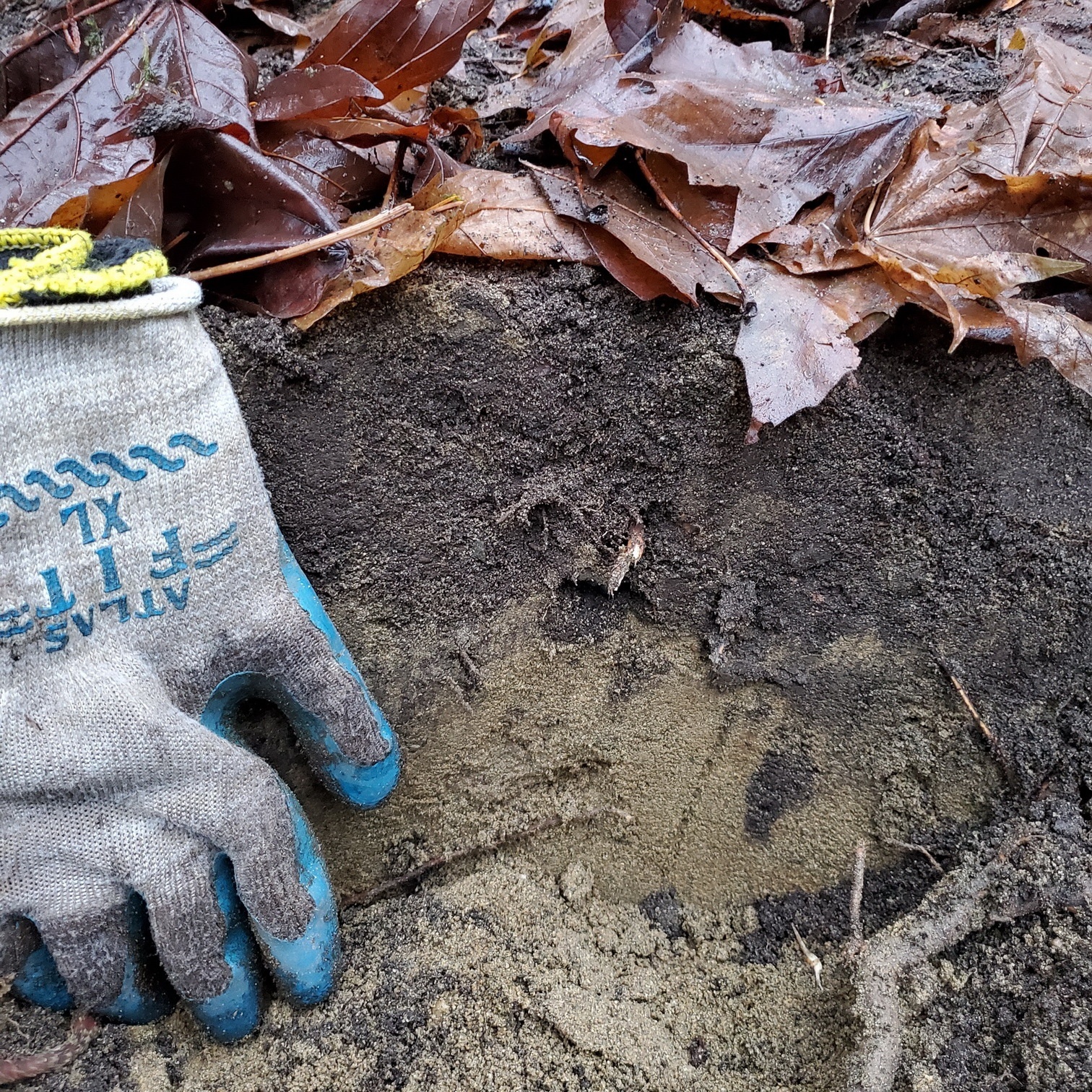You may have read recently about the irreplaceable loss of topsoil from the American corn belt – at least a quarter of its unrivaled prairie topsoil eroded away — the result primarily of 150 years of tillage. It reminds me that in my forest restoration work, I have been far too careless with the topsoil.
The National Web Soil Survey (NWSS) describes the soil where I do most of my restoration work as “gravelly sandy loam,” a moderately well-drained soil with 1-7” of grayish-brown topsoil. That topsoil may not rival the foot-deep, black loam of Iowa, but it is good enough to have supported the magnificent coniferous forests that once covered the Puget lowlands.
Our topsoils, like those of Iowa, formed from the gravelly, sandy deposits of glacial till left from two million years of repeated advances and retreats of continental glaciers. Those deposits are up to several thousand feet deep in the central Puget Sound Region but condense into impervious hardpan within 1-3 feet of the surface.
The topsoils of the Puget Sound Region — perfect for our native trees, shrubs, and understory plants — have several characteristics that warrant our concern:
- The sandiness of the soils and relative lack of clay mean that they are easily disturbed and thus susceptible to erosion.
- Where hardpan is close to the surface, trees can be more susceptible to wind throw (especially if they are full of Ivy).
- Moderately well drained soils dry out fairly quickly. This is both a reason to plant natives (which are adapted to summer drought) and a reason why establishing new plants without irrigation can be difficult.
- The rate of topsoil formation in our region is painfully slow – less than 1” every 2,000 years. Only 7” has accumulated (at most) since the last glacier retreated 15,000 years ago.
The soils that support our Puget Sound forests are precious and fragile, the result of thousands of years of slow accumulation. Removing invasive plants from these forests is essential to their long-term health, but care must be taken to minimize and mitigate the resulting disturbance of the soil. Done well, forest restoration nurtures the native plant ecosystem, and that cannot be done without also caring for the soil.
For More Information
If readers are interested in more information on the soil in the Puget Sound Region and the implications for forest restoration practices, I have consolidated much more information and posted it as “Soils in the Puget Sound Region and Implications for Forest Restoration Practices” on this website under “Resources.”
